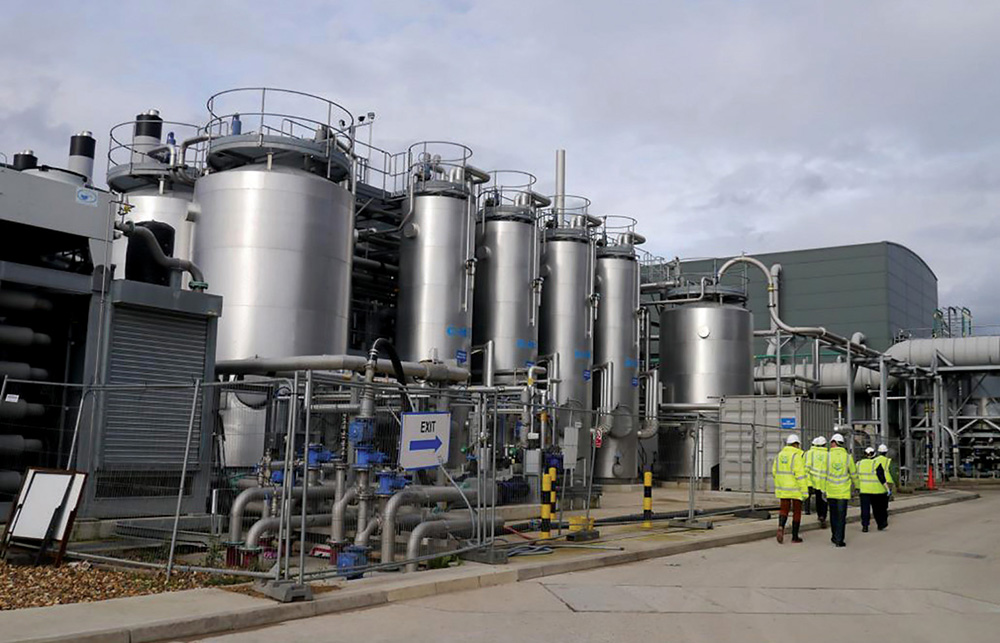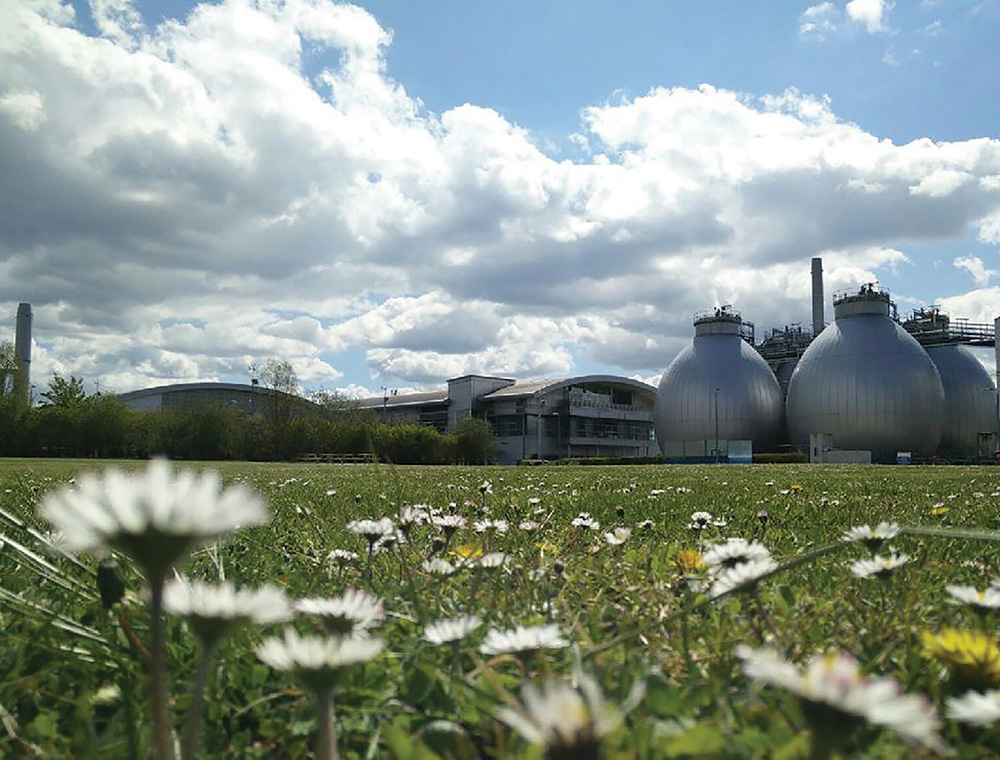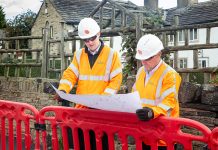Ester Rus is sludge and energy manager for Thames Water’s wastewater innovation. Here, she discusses the importance of renewable energy from sludge, and how the company’s innovation teams are maximising its generation
Introduction to
Bio-resources:
In recent years, the concept of sludge has gone from a waste that we needed to get rid of, to a valuable recyclable product from which to get energy, nutrients and maybe even precious metals.
It is therefore not surprising to see the term “sludge” being replaced by “bio-resources”.
The technology used to treat our wastewater is very well established but it has its limitations. More than a hundred years ago, when anaerobic digestion (AD) was first introduced, the drivers of that society where very different and have been changing with time. Just 30 years ago, nobody was interested in getting renewable energy out of sludge.
However, fast forward to the modern day and it is one of Thames Water’s key drivers.
Our current approach to treating bio-resources focuses on ensuring a cost effective and sustainable treatment, that can produce the best final product , which is then recycled back to the environment.
This helps keep our services affordable as well as providing an environmental and public health service up to 21st Century standards.
This approach is common to many UK utilities, but the specific drivers might be slightly different for every region. In the case of Thames Water, our main drivers are clearly defined by the challenges we face now and are expected to face in the near future.
We are facing hard challenges ahead:
One of the most pressing challenges is population growth.
In our region, the increase in output will push our assets to the maximum, and we will need to accommodate for this increase in sludge volumes within our current site footprint.
Climate change is another challenge, as it can cause disruption in our processes. It’s expected that extreme events such as flooding and drought will increase in the next 50 years.
We will also face difficulties in transporting our sludge cake to nearby land as it becomes scarce, meaning we will have to travel further distances, increasing costs.
Energy prices have gone up and the electricity market has changed dramatically in the last five years, going from a fairly predictable and stable output to a more volatile situation due to the introduction of renewables. It therefore will be challenging to predict when to sell electricity.
Furthermore, environmental legislation is likely get to get stricter in terms of consents, meaning we will be likely generating more bio-resources to treat.
Why Innovation is crucial:
Business as usual will not be good enough to ensure we overcome the challenges ahead. Thames Water is aware of this and has innovation at the core of its business. In terms of the science behind it, we are privileged to have an innovation department dedicated to addressing those challenges and convert them into opportunities.
We’re dedicated to finding alternative ways to optimise our current assets, and identifying those new technologies and ways of thinking to ensure we stay ahead of the curve. The sludge and energy team, along with wastewater processes and wastewater networks, make up the Wastewater Innovation team at Thames Water.

Sludge and energy team and 2 tech examples:
Sludge and energy focuses on optimising the bio-resources treatment, by helping out with current issues onsite and looking into more innovative ways of unlocking the full potential of that product.
One example of utilising current same technology on our sites in a different way to generate more benefits and a better product is the Intermediate Thermal Hydrolysis Process (ITHP).
Both AD and its pretreatment, the thermal hydrolysis process (THP), are technologies we understand well and work very well together, but there are ways of arranging the order of these to enhance efficiency.
The ITHP does that. It has a first stage of AD where the readily available organic material is digested with a high load and short retention time. The digested sludge coming out of the first stage is two thirds of the volume of the throughput going in.
This is then hydrolysed in a smaller THP unit where the locked organics are solubilized and ready to be digested in a second stage digester, which is half the size of the first stage digester.
The ITHP increases biogas generation by 17 per cent compared with the conventional set up and reduces cake volumes coming out of the process by 20 per cent as the dewatering efficiencies improve thanks to that process, lowering costs and producing a high quality product farmers find appealing.
Furthermore, the ITHP is smaller compared to a conventional THP arrangement, which means there is less steam required and no need for additional fuel to run the sludge treatment.
The gas generated in both stages can power up the THP and heat up the digesters. Finally, the process is very resilient and is able to cope with higher inputs than the conventional process. This helps us treat more bio-resources with the same digester volume, and is now being considered for various locations.
The team also looked into other technologies that have a lot of potential at energy recovery.
The very high cake dryness achieved with THP and more so with ITHP opens up the full energy potential of sludge as it makes economically viable to explore advanced energy recovery (AER) routes.
One of the most efficient AER options is pyrolysis. The digested cake is first dried in a low temperature drier that gets rid of 90 per cent of the water in the cake.
The resulting product is heated under controlled conditions to 900oC in the absence of oxygen, and two products are obtained:
Fuel gas which has a great energy content, getting 2/3 extra energy from sludge and making the entire sludge treatment process energetically self-sufficient.
Char, a by-product with high concentrations in key elements like nitrogen and phosphorous and even precious metals that could be recovered.
Pyrolysis is expected to extract up to 85 per cent of the total energy, where we are currently just accessing a max of 50 per cent.
This technology is currently being commissioned at Crossness sewage treatment works
Benefits to Our customers:
Innovation across the bi-oesources teams has a great impact on delivering customers’ expectations.
It’s clear customers want us to be more environmentally friendly, and we’re committed to becoming a more sustainable company.
We ensure our bio-resources treatment is robust and the most efficient at treating the product to get the most renewable energy out of it, at the same time as reducing our carbon footprint.
What we do with our final cake product is crucial. The farmers are after a clean, homogeneous, nutrient rich product fertiliser.
The improvements by introducing THP into the bio-resources process have ensured we meet these standards and has taken us to a point where we can get a benefit from distributing our bio-fertiliser as it is now a product farmers value.
And finally, the savings we get from generating our own renewable energy in an efficient way, lowering transport costs, increasing the throughput through our existing assets helps to continue to provide an affordable service for customers.






